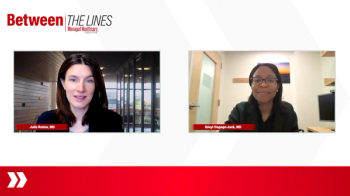
Understanding Billing and Coding for Alternative Therapies in TRD
Key opinion leaders discuss navigation through challenges with appropriate coding for TRD treatment.
Episodes in this series

Steven Levine, MD: We’re hitting on some of the important considerations in benefit design and highlighting some of the complexities in the system. Those complexities extend to billing and coding. Sometimes navigating these complexities is a reason for patients who are already struggling to drop out along the way and not get the care they need. Those complexities can also potentially extend to providers and billing managers. Ms Jardine, could you perhaps speak to this and some of the challenges that you see on that front?
Carrie Jardine: Absolutely. Understanding payer guidelines and their policies is important in regard to making sure that whatever treatments the provider and patient determined is the best to go with is reimbursed and in a timely manner. Specifically, for a newer treatment like Spravato, or esketamine, it was such a different type of medication in its delivery and the observation period that there was a lot of education that had to be done on the provider’s office’s side to the payers’ claims management and the provider representatives.
When you’re trying to obtain benefits and eligibility information from provider representatives who are used to dealing with basic benefits, and you start asking for more specific things like medications and observation periods, you can give them codes. You have to make sure you have the right codes based on the policies that they have. A lot of times, the provider representatives are confused and maybe don’t have the right information and tools in front of them to give the office or the patient the correct information for things like out-of-pocket expenses.
Knowing what codes are going to be recognized by which payers is very important for benefits investigations and reimbursement. Looking at something like Spravato, or esketamine, there are a lot of different ways that can be coded and recognized by a payer. That also has to do with whether you’re buying and billing, if it’s a Medicare patient, whether you need to utilize a J-code or an S-code for the pharmacy benefits, or whether you need to utilize the G-code that CMS [Centers for Medicare & Medicaid Services] created as an all-inclusive code. Knowing which payers recognize that is difficult to understand. Knowing which is applicable to which patient can also be difficult to navigate.
Steven Levine, MD: Within all of that, what guidance can you provide as far as how providers and billing managers and revenue cycle managers navigate through that and understand the appropriate codes to use with which payers under what circumstances?
Carrie Jardine: Get familiar with your payer websites. The information is usually out there. Some payers don’t make it easy to find, but learn those websites. If you happen to have a provider representative whom you’re able to get in touch with, they’re great resources in being able to point you in the right directions. They may not be able to tell you outright due to different legalities, they can’t help you with coding, but they can definitely point you in the right direction in regard to finding those policies and what codes are recognized and what are applicable. You have to sometimes push provider representatives whom you’re calling toward the right area to make sure that you’re getting the correct benefits for the patient.
Steven Levine, MD: You mentioned before that there are potentially separate codes for the drug vs the delivery and monitoring. Sometimes they’re bundled together and covered by a more comprehensive G-code. Within what you’re describing about how to make sure you’re appropriately coding and submitting claims, are there other ways that you can ensure timely access and reimbursement for the components of intranasal esketamine?
Carrie Jardine: Understanding your payers and their structures, the difference between pharmacy and medical benefits, whether you’re going to buy-and-bill or go through specialty pharmacy, and understanding if you have a Medicare or a Medicare Advantage patient that there’s the all-inclusive G-code that can be billed for the medication, the observation period, or any type of office visit that’s done that day.
Another thing to watch for are your contracts because not all contracts are the same or have the codes that you need. When we first started negotiating with contracts, there were payers who were leaving all types of TMS [transcranial magnetic stimulation] codes off of our fee schedule, along with Spravato codes, like the observation code 99417. I had to go back to a lot of payers and let them know, “These are treatments that we give your patients, so please add these onto our contracts.” Otherwise, you’re not going to get paid for those services if they’re not in your contract.
Patricia Ares-Romero, MD, FASAM: That’s so important because we ran into that issue as well. You have to make sure that those codes or services are included in the contracts. Whoever does your revenue cycle, make sure that you do that. That’s very important. The other thing I want to add is that you can use some services like CarePath—I think they’ve changed their name now—because it’s important to distinguish whether the patient has a medical benefit or a pharmacy benefit as part of that as well. I wanted to add that to the conversation.
Transcripts edited for clarity.
Newsletter
Get the latest industry news, event updates, and more from Managed healthcare Executive.


















































